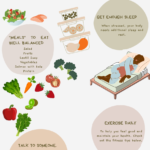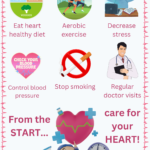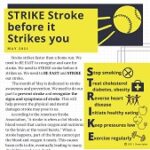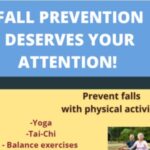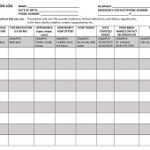Promoting Good Health

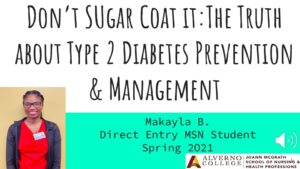
To stay healthy do all four types of exercises.
Endurance exercise
This will increase your breathing and heart rate. Some ideas are walking, swimming, and dancing. This helps your heart, lungs and circulation.
Strength exercise
This builds muscles and makes you stronger. Use weights or stretchy bands to gain strength start with two times per week. This helps your metabolism and will give you more strength to do your activities.
Balance exercise
This helps to prevent falls and help you to be safe in your activities. There are many types of balance exercises such as tai chi and yoga.
Flexibility exercise
This will keep your body limber by stretching muscles and may also help to prevent falls. Stretch all of your muscle groups.
Do all four types of exercises every week. Click here for more information.
Source https://www.webmd.com/back-pain/tips-for-pain-relief#1
Four out of five people experience back pain at some point, making it the second most common reason for visiting the doctor.
Back care basics
- Stretch daily to help your back. Maintain a good posture.
- Be active this helps to reduce inflammation and muscle tension.
- Keep your core muscles [your abs and back muscles] strong they support your spine.
- Wear shoes that give you support. A shoe with a heel higher than one inch will shift your center of gravity and strain your lower back.
- Maintain your ideal weight, extra pounds in your midsection can make back pain worse by shifting your center of gravity and putting a strain on your back.
- Sitting. Your feet should touch the floor or be supported. Keep knees & hips level. Practice good ergonomics.
- Be careful lifting use your knees and squat to pick heavy items up. Hold items close to your body and don’t twist with heavy objects.
Remember:
- Smoking restricts the flow of nutrient-containing blood to the spinal discs.
- If you are sitting get up every 30 minutes to move and stretch.
- When using devices keep them at chest or eye level so you do not strain your neck or back.
Vaccine Schedules (All ages) – CDC
A link to an 18 and under vaccine schedule is below the age 19 and over table.
An advance directive describes, in writing, treatments you want or don’t want. It tells others what to do with your care if you get injured and can’t express your wishes. You can complete an advance directive if you are 18 or older and of sound mind.
Wisconsin Dept. of Health Services – Advance Directives
Mental Health

We all may get anxious from time to time. We know it is important to do good self-care.
We need to have strong boundaries and say no when needed. To take time for our self and share our feelings with a trusted person.
But, for some people anxiety may be chronic, lasting six months or more. People may have excessive worry and tension. They may expect the worst. They are unable to relax and may have insomnia. There may also be physical symptoms like fatigue, trembling, muscle tension and headaches.
If you are having chronic anxiety, please talk with your primary care provider. If you are experiencing “everyday anxiety,” try some resources on this page.
Assessing General Anxiety Disorder
Symptoms of Generalized Anxiety Disorder
11 tips for coping with anxiety disorder
Tips to Manage Anxiety
Click picture to open infographic
Being healthy means dealing with the changes in your body – and your mind. Relationships, body image, families, emotions. Teen Health Website
Physical Health

Cardiac Health/ Heart Health
Quitting smoking is possible. By taking small steps, you can learn what works for you. Smoking cessation How you can help your heart if you quitting Smoking (webmd.com) Smoking and cardiovascular disease | Johns Hopkins Medicine
An abdominal aortic aneurysm (AAA) is a bulge (aneurysm) in a weak or damaged area of your aorta wall. AAA’s occur in the abdominal section of your aorta down near your stomach.
Your aorta is your body’s largest artery, one of the vessels that move blood from your heart to the rest of your body. It runs from your heart all the way down to the bottom of your abdomen.
AAA’s can be silent killers. You may not have any symptoms of this condition until your aneurysm bursts. A burst aneurysm would cause you to bleed internally and requires emergency surgery.
If you are in a high-risk category talk with your health care provider see if you need to be screened.
Conditions or actions that weaken or damage your artery walls can lead to an aneurysm. These risk factors include:
- Smoking
- Being male. Men are more likely than women to have an aneurysm
- Age 65 or older
- Were involved in a major physical trauma like a car accident
- Have atherosclerosis (buildup of plaque that narrows your arteries)
- Have high blood pressure
- Your genetics can also play a role, with aneurysms running in some families. People with an inherited condition called Marfan syndrome, for example, face a higher risk of developing aneurysms.
Heart failure, also known as congestive heart failure, occurs when a person’s heart is not able to pump blood the way it should. As a result, the body doesn’t get enough blood – and the oxygen that blood cells carry – to maintain the body and its normal functions. It is a common reason for people over 65 to go to the hospital. What Causes Heart Failure? The most common cause of heart failure is coronary artery disease (CAD). In this condition, arteries that supply blood to the heart become clogged or blocked with a hard buildup called plaque. Other risk factors and causes of heart failure include: Anyone can develop heart failure, but it is more likely in people who are male, over 65, diabetic, overweight or obese. Signs and Symptoms of Heart Failure To compensate for poorer performance, a failing heart may get bigger, develop extra muscle mass or pump faster. These changes weaken the heart over time, and the person’s health gradually worsens. As heart failure advances, signs may include: There are many types of treatment. It is important to diagnose and treat heart failure at an early stage. Depending on the stage of heart failure, treatment may include but not limited to medication such as diuretics (Lasix), or beta blockers, and surgery. Heart failure – Symptoms and causes – Mayo Clinic
If you have a health condition, something that will not be resolved quickly, you will need to manage this condition with your health care provider. Examples of chronic conditions include high blood pressure, diabetes, arthritis, chronic pain, headaches, and thyroid problems, among others
We all want to stay as healthy as possible and feel well.
Here are some practical steps to take.
- See your health care provider as recommended.
- Take your medications as prescribed.
- Eat as healthy as you can for your condition. You may need to watch your salt or sugar intake.
- Move as much as you can. You may need to do special exercises depending on your condition.
- Learn about your condition read about it, take a class, join a support group. The more you know about your condition, the healthier you can be.
- Be empowered, ask questions of your doctor on what you can do to stay well, take a list of questions that come up between visits. Many health care systems provide ways to contact your health care providers. Use the system’s e-mail to ask advice or report non-urgent information.
- Have a good relationship with your pharmacists. Talk with the pharmacist or tech about concerns:
- When and how to take your medications.
- Questions about starting a new over the counter medication.
- Ask about drug interactions, especially regarding over the counter drugs and supplements.
- Ask what to do if you miss a dose.
- Always keep a list of all your prescribed and over the counter medications with you. This includes; vitamins, supplements, sprays, and ointments. Take it with you to all health care provider appointments and share it with your pharmacist. You need to understand what medications you are taking and how they may interact with each other.
This link takes you to the National Council on Aging’s website that lists options for self management of various chronic conditions:
National Council on Aging with multiple links to programs for specific concerns
National Center for Chronic Disease Prevention and Health Promotion – CDC
- Taking better care of yourself means having healthy boundaries. It’s okay to say “No.” You can say: “I cannot help you in that way,” or “I can’t provide you with the help you need.”
- If someone is asking you to do something, take a moment to ask yourself, “Do I want to do that? Do I have time or energy to do it?”
- It is okay to say “No.” even to good things. We know what our priorities are. We know how much energy we have.
- Set limits and boundaries. Breathe! Remember you can take care of yourself. Don’t own other people’s reactions. Learning to say “No” may take practice. Remember only you can take care of yourself.
COVID-19
Managing Anxiety and Stress – Center for Disease Control’s website
A collection of resources for seniors from the National Council on Aging.
Medications
If you are on medications, you need them. They may be to control some disease, like high blood pressure, or to give you something your body is missing, like thyroid medication, or to keep a disease from coming back, like cancer medications. Make sure you have the correct medication. If the pill looks different, question it. Call your pharmacy to check why is it different. They may be using a different supplier, or it may be the wrong medication. There are many ways to get your medications: going to the pharmacy, ordering by mail, calling in a refill, or having it refilled automatically. Pick the service that works best for you. Take your medication at the same time every day. Tie it to a daily routine like brushing your teeth or getting ready for bed. Follow the directions. Do you need to take it on a full or empty stomach? Use a pill container. Some have sections for multiple doses: morning, lunch, evening, and night. Fill the container the same day every week. Make sure to have a small container to take with you when you are out to eat. When traveling keep your medications in your carry-on bag. There are machines that will remind you about your medications. If you just struggle to remember to take your medicines call me, we can come up a plan together.
Stroke
Diet/Nutrition

Eat Well, Live Well
U.S. Department of Agriculture healthy eating tips. ChooseMyPlate Benefits of Healthy Eating-CDC Do you know your fruits and vegetables? Take the quiz!
Types of Diets
Vitamins and Supplements

Probiotics are the microbes that live in your gut and prebiotics are the food they eat.
Prebiotics are very important for the health of your microbiome (your gut) as they stimulate the growth among preexisting good bacteria.
Prebiotics are a type of non-digestible fiber that helps your good bacteria. They are found in foods like: asparagus; Jerusalem artichokes; jicama; bananas; oatmeal; legumes; berries; and the skin of apples, onions, and garlic. Prebiotics pass through the upper part of the gastrointestinal tract, when they reach the colon they are the nutrient source for the beneficial bacteria that live in your gut.
Probiotics are found in fermented foods like sauerkraut, kombucha, kimchi, cultured yogurt, raw cheese, goat’s milk, sheep’s milk, apple cider vinegar, salted gherkin pickles, brine-cured olives, tempeh, and miso.
Prebiotics and probiotics enhance our gut health. Working together they help to battle inflammation and help in lowering overall disease risk.
Increase your intake of prebiotics.
Prebiotics are linked to benefits, including:
- lower risk for cardiovascular disease
- healthier cholesterol levels
- better gut health
- improved digestion
- lower stress response
- better hormonal balance
- higher immune function
- lower risk for obesity and weight gain
- lower inflammation and autoimmune reactions
Senior Care

Please check the Table of Contents to link quickly to the topic you’re most interested in Popular Topics: How much does Medicare in Wisconsin? Medicare Resources in Wisconsin
If your healthcare provider is: It may be time to change your healthcare provider.
Prepare before you see your healthcare provider: Before you leave your provider:
Click picture to open infographic
Medication Logs and Health Literacy
Medication Logs How To
Oh, no, I forgot to take my medications again
Palliative care is specialized health care for people for people living with a serious illness. It focuses on providing patients with relief from the symptoms and stress of the illness. The goal is to improve quality of life for both the patient and the family. Hospice care provides for the physical, emotional and spiritual pain for someone whose illness, disease or condition is unlikely to be cured and treatment of the disease is stopped. Both provide comfort and support. Palliative care is provided by a specially-trained team of doctors, nurses, and other specialists who work together with a patient’s other doctors to provide an extra layer of support. Palliative care is based on the needs of the patient, not on the prognosis. It is appropriate at any age and at any stage in a serious illness, and it can be provided along with curative treatment. Palliative care is based on need, not prognosis. Hospice care is individualized depending on what each patient needs; it also provides support for the family during the illness and grief support after death. Hospice care can be provided in a home, hospital, assisted living, nursing home, or a freestanding hospice center. Two physicians must certify that the patient meets the medical eligibility criteria for hospice, usually with a patient’s life expectancy of 6 months or less if their condition runs its typical course. Talk with your physician about the need for palliative or hospice care.What is the difference between Palliative care and Hospice care?


